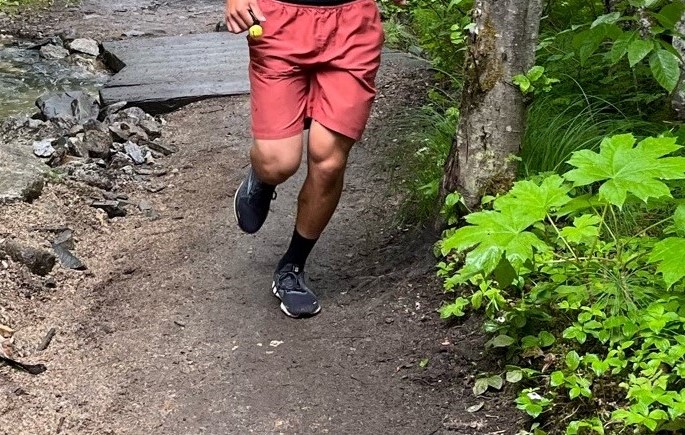Energy Return
Energy return is constantly on a runner's mind. Runners optimize for efficiency by strategically stretching
our connective tissues: fascia, tendons, and ligaments. This multiplies our energy output every time
we go through a stretch-reflex cycle. Another advantage is it reduces the amount of computation our brain has to do
because we can confidently predict the result of each stretch-reflex cycle. Our body's passive dynamics
free up both metabolic and computational resources for faster high-level decision making.
A helpful way to understand energy return is to understand how different sections of the body accomplish this
and then understand how they work together. For this purpose, I partition the body into 3 areas: core, legs and arms.
Core
Our core has almost unlimited degrees of freedom and is at the center of all movement. This combination makes core
control a key player in achieving high energy return. Our core is tightly wound with muscles, fascia, and tendons
that give us the high level of control that is neccessary for efficient movement.
Stiffness is the number one priority; energy can easily dissipate into the tissues around the core becauase of the high degrees
of freedom. Stiffness is achieved by contracting muscles and increasing intra-abdominal pressure. Think of
bracing for a squat,
but in a more dynamic way. To brace in the best way for running, for each step we predict the direction of the force we put into the ground
and increase core stiffness in that direction.
We can now pair our dynamic bracing with the stretch reflex of our core. The main stretch reflex comes from the fascia
that wraps from our hips to oppsite shoulder blades, forming an X across the front of our body. A diagonal of the X
stretches with each step, and as this contracts it propells our back foot and opposite shoulder forward. This in turn loads
the other diagonal of the X and the cycle repeats. This cyclic motion keeps energy within the system and allows for more efficiency.
Legs
Our legs are structurally sound springs. While the core mostly determines what direction we move in, the legs provide the force to
move us. Stiffness is important here, but because there are less degrees of freedom the stretch reflex
plays a much bigger role. The stretch reflex in the legs is much more linear; the achilles tendon and other tendons stretch
and recoil to put force into the ground.
The hips are the interface between the legs and the core. In a perfect system, the hips align the force from the legs to
the direction of stiffnes in the core.
Arms
Arms provide a counter balance to keep us moving in the right direction. This is especially apparent in trail running when
running downhill. Although the arms don't contribute a lot to power production, they demonstrate the importance of counter
balance for efficiency.
Ground Contact Logic
Knowing where to strike, when to heel strike or toe strike, and understanding the properties of the ground you are striking feels
intuitive to humans. Doing this well is only achieved through time and practice. After a lot of practice, I've determined that
speed and quality of the decision are the two things to optimize for.
The value of making fast decisions is obvious. There is a limited amount of time between the last decision and the next, which
puts an upper bound on the required speed of a decision. However, optimizing beyond this upper bound gives more tolerance for
the quality of each decision and frees up more resources to plan further ahead.
Likewise, increasing the quality of each decision gives more tolerance for the speed of each decision. A high quality decision
can give a better prior for the next decision you will have to make, therefore increasing the speed and quality of the next decision.
Dynamic Balance and Foot Trajectory
Prediction is the name of the game; reaction should be a last resort. Once you have a ground contact decision and
aligned your foot trajectory with that decision, you need to predict what you will need to do to stay balanced.
This means predicting the direction of the force you will put into the ground and how to optimize energy return
around that.
Discovering Properties of an Uncertain Environment
At the beginning of a trail run in a new place, the prior is the knowledge of all the previous trail runs.
With each step, the prior is slightly updated for the properties of this environment. In order for this model to
be effective, there must be a descriptive prior before the trail run even starts. The ability to discover
propeties of a new environment depends on a solid, low-variance, knowledge of previous environments so that the
updates to the prior can be valueable and specific to the new environment.
